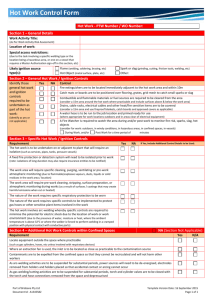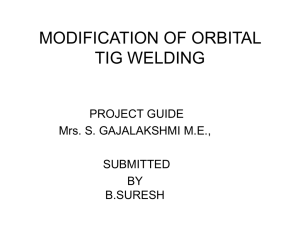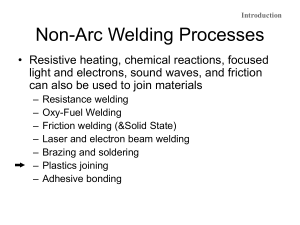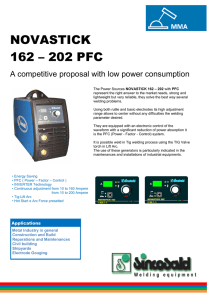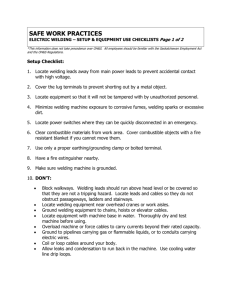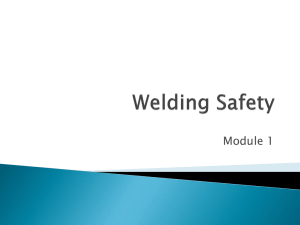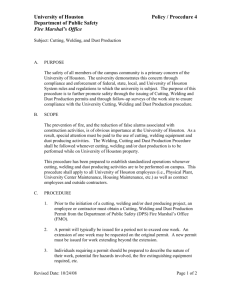Welding – General Safeguards
advertisement
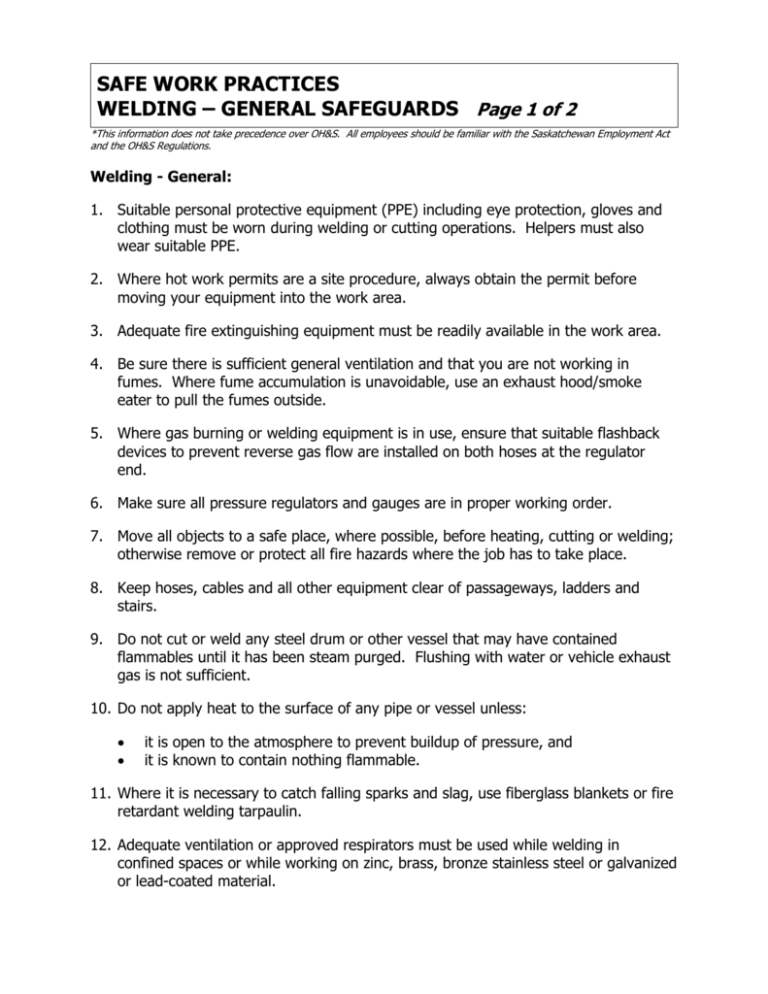
SAFE WORK PRACTICES WELDING – GENERAL SAFEGUARDS Page 1 of 2 *This information does not take precedence over OH&S. All employees should be familiar with the Saskatchewan Employment Act and the OH&S Regulations. Welding - General: 1. Suitable personal protective equipment (PPE) including eye protection, gloves and clothing must be worn during welding or cutting operations. Helpers must also wear suitable PPE. 2. Where hot work permits are a site procedure, always obtain the permit before moving your equipment into the work area. 3. Adequate fire extinguishing equipment must be readily available in the work area. 4. Be sure there is sufficient general ventilation and that you are not working in fumes. Where fume accumulation is unavoidable, use an exhaust hood/smoke eater to pull the fumes outside. 5. Where gas burning or welding equipment is in use, ensure that suitable flashback devices to prevent reverse gas flow are installed on both hoses at the regulator end. 6. Make sure all pressure regulators and gauges are in proper working order. 7. Move all objects to a safe place, where possible, before heating, cutting or welding; otherwise remove or protect all fire hazards where the job has to take place. 8. Keep hoses, cables and all other equipment clear of passageways, ladders and stairs. 9. Do not cut or weld any steel drum or other vessel that may have contained flammables until it has been steam purged. Flushing with water or vehicle exhaust gas is not sufficient. 10. Do not apply heat to the surface of any pipe or vessel unless: it is open to the atmosphere to prevent buildup of pressure, and it is known to contain nothing flammable. 11. Where it is necessary to catch falling sparks and slag, use fiberglass blankets or fire retardant welding tarpaulin. 12. Adequate ventilation or approved respirators must be used while welding in confined spaces or while working on zinc, brass, bronze stainless steel or galvanized or lead-coated material. SAFE WORK PRACTICES WELDING – GENERAL SAFEGUARDS Page 2 of 2 13. Be especially careful to ventilate when using a TIG welder and inert gases. In poorly ventilated areas these gases will displace the air and can be fatal. 14. Before entering a tank, bin or any other confined space, testing must be done to ensure no flammable/toxic vapor or gas could be present. Use proper purging/ventilation procedures. 15. Do not take cylinders into a confined space. 16. Use a friction lighter to light a torch – do not light with a match or from hot work. 17. Never keep a torch in a box or cupboard while still connected to the cylinders. 18. Protect any load bearing ropes or cables from effects of welding operation. 19. Take the torch and hoses outside the vessel whenever you shut off the flame to take any kind of break. 20. When welding equipment is not in use, the cylinder valves must be closed and the pressure released. Drain all torch hoses at the end of the work day. Gas Welding & Cutting: 1. Compressed gases must only be used by workers who are authorized, experienced and properly instructed. 2. Check valves must be used on all oxy acetylene regulators and torches to prevent flashback in the hose and/or regulators. 3. Do not use a defective torch or use the torch as a hammer. Arc Welding & Cutting: 1. Use only manual electrode holders specifically designed for arc welding and cutting. 2. Check that all cables, insulated connectors and the ground connection are capable of handling the current, and that the insulation is in good condition. 3. Wear gauntlet gloves, safety glasses and a helmet, and screen job from other workers. Ensure other workers are aware of the hazards.
